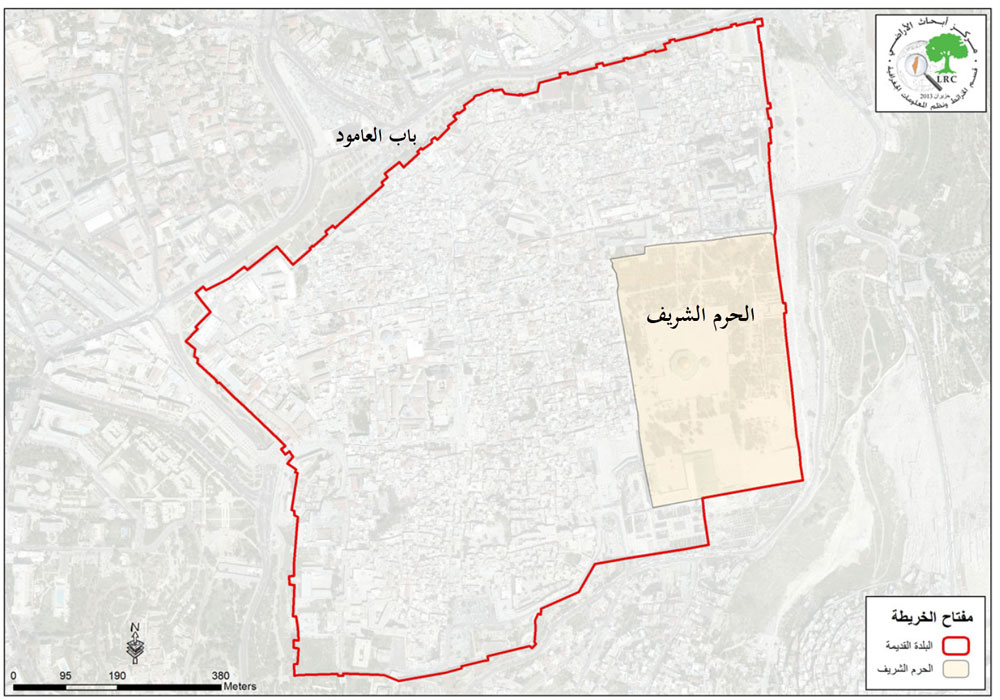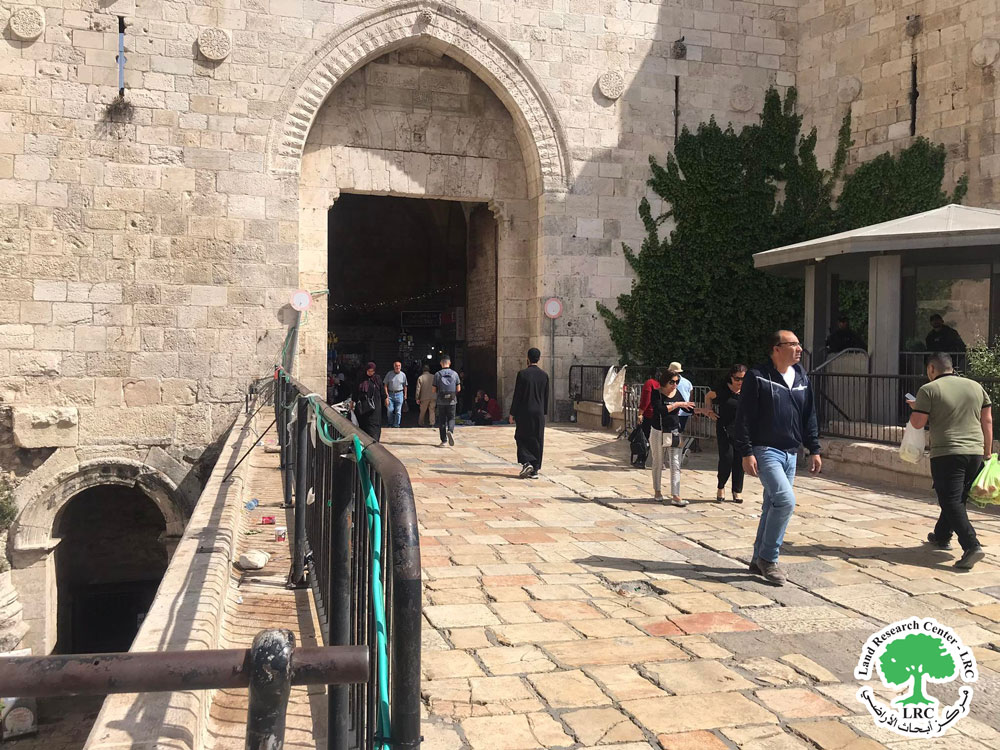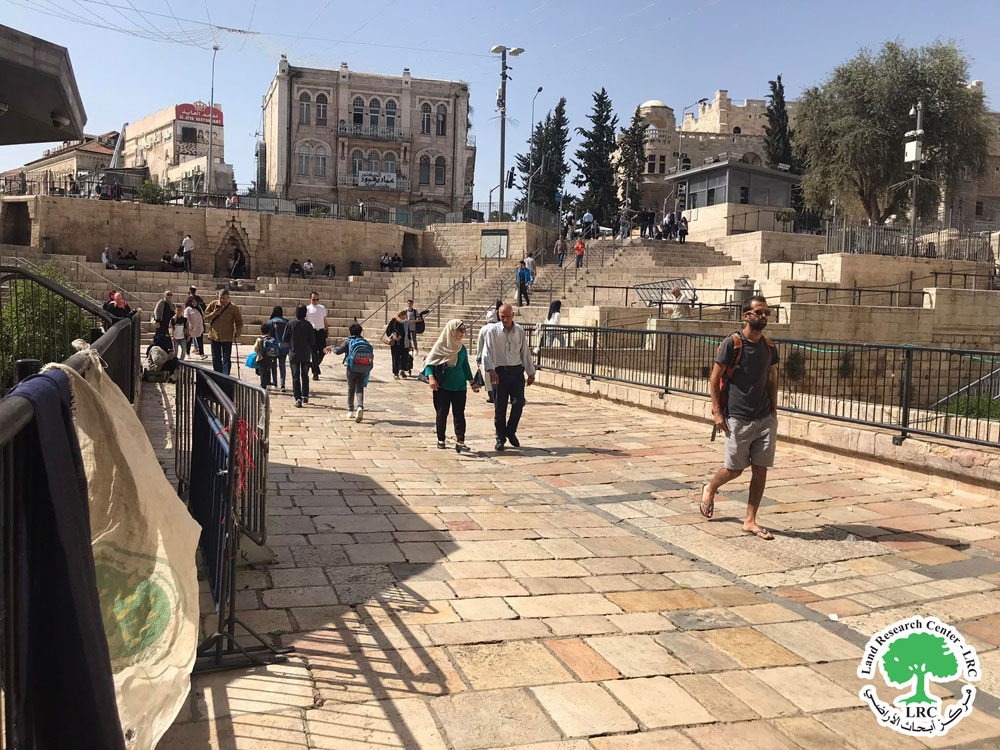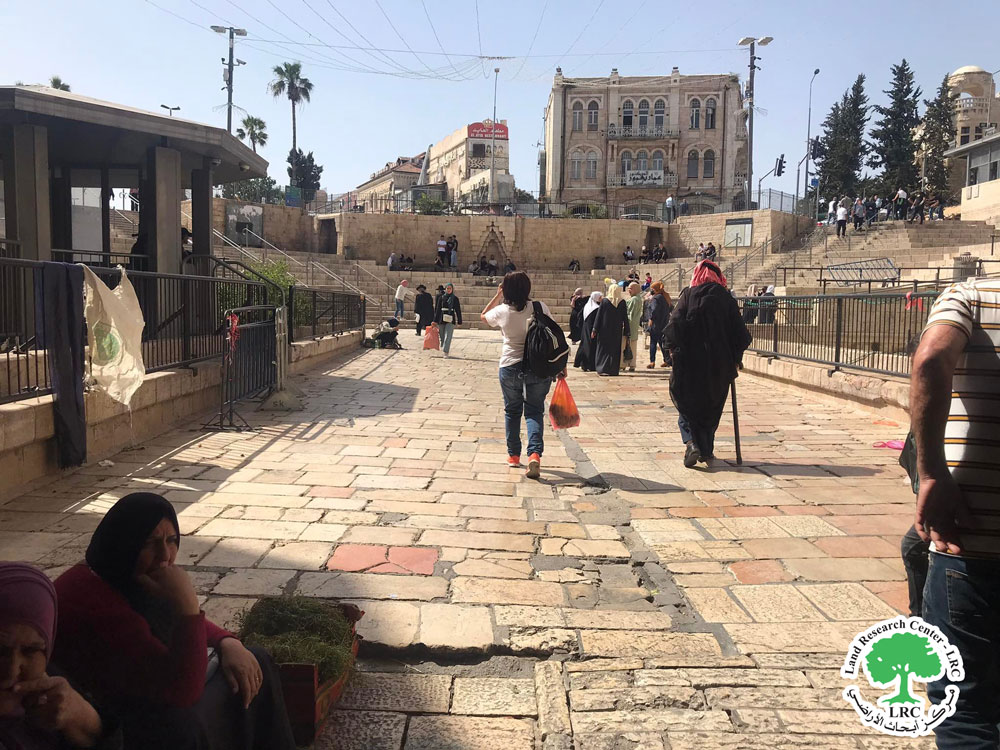2022-05-09
In a new Judaization move at Bab al-Amud...the occupation places iron barriers on the external benches of Bab al-Amud
The occupation forces and the municipality set up iron barriers (balustrades) on both sides of the entrance to Bab al-Amoud, these balustrades were installed during the month of Ramadan, claiming to reduce the crowding during the entry of Palestinians through the Bab al-Amoud. However, the aim of it is to prevent the residents from sitting near the Bab al-Amoud and consequently moving away from it, even for a few meters. This is a blatant change of the status quo there and an unjustified control over the feelings of the residents and visitors of Jerusalem.
The stone benches extend on both sides of the entrance to Bab al-Amoud It is opposite and consistent with the wall of the door and is about 10 meters long to the south. Closing it is part of a larger Judaization project that is being implemented on a daily basis to completely change the reality of the place.
It is a place for residents and visitors of the Old City to sit, and these stone benches have always been a place for the residents to rest and eat their coffee and breakfast in the place for many decades. By placing such barriers, the occupation prevents the residents from sitting there and from practicing their usual social life.
Photos show metal blocks placed by the Israeli Occupation in Bab Al-'Amud
Bab al-Amud:
Bab al-Amoud is one of 13 gates around the old city of which 8 are open and 5 are closed. It is considered one of the most important and most beautiful gates of the old city. It is the main entrance to the Al-Aqsa Mosque and the Church of the Holy Sepulcher. It is located on the northern side of the wall surrounding the Old City at the beginning of the valley that cuts the Old City from the north to the south, known as the "Al-Wad" road.
The construction of Bab al-Amud dates back to the Ottoman period between 1537 and 1539. The door is surmounted by a small guard hole and a crown that was destroyed in an earthquake that struck Jerusalem in 1927 AD, and later on, restored by the occupation authorities.
Bab al-Amoud was called by this name due to the presence of a 14-meter-high black marble column, which was placed in the inner courtyard of the gate during the Roman period more than two thousands years ago. Through this column, the distances from Jerusalem were measured by means of “Milliaris” stones, and it is believed that this term is the origin of the unit of measurement "the mile" which is used today to measure distances. Bab al-Amud has other names such as Damascus gate and Nablus gate as it faces the two cities to the north and the ancient trade caravans originated to the two cities from Damascus gate. The total area of its courtyard, terraces, and Mamluk shops at its entrance is about eight and a half dunums.




